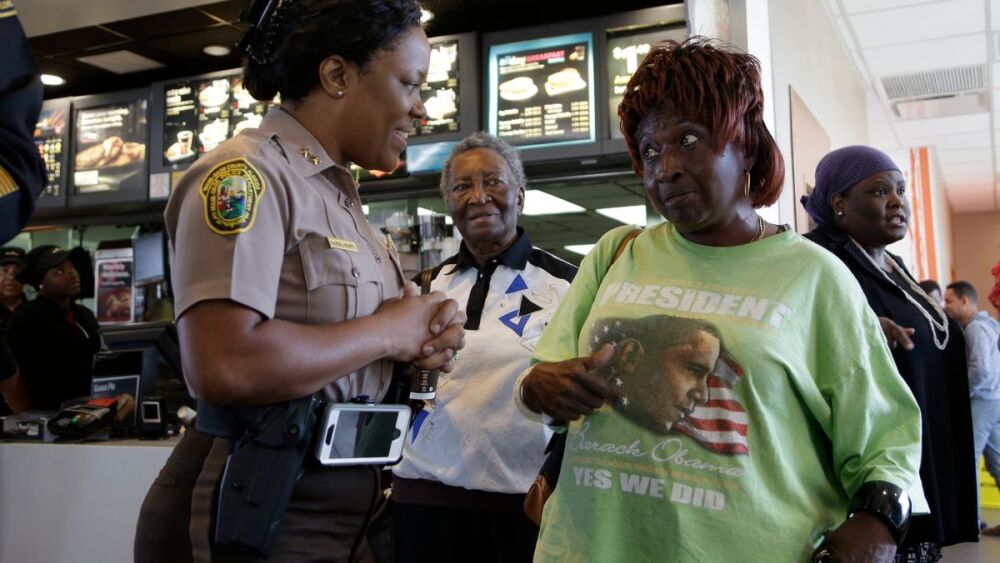Trust: What law enforcement needs (but often doesn’t have) to perform their jobs well. When community members don’t trust their police force, crime increases, community members don’t get the help they need, and law enforcement professionals don’t feel equipped to perform the job of serving and protecting effectively. Why don’t communities trust their law enforcement officers? Police departments, strapped for time and dealing with competing priorities, don’t always do the work necessary to build that trust. Intentional community policing is a must in today’s climate and for any department looking to have a more engaged and safer community.
In a recent Lexipol webinar, “Conflict at the Fence: Tools to Turn Critics into Advocates,” Sgt. (Ret.) Jason Lehman offers a unique perspective on procedural fairness and community policing, alongside tangible advice for law enforcement professionals as they seek to de-escalate conflict and build relationships.
Procedural justice & community policing
“What matters more?” Lehman asks, “The process or the outcome?” Procedural justice stems from the idea that actions are both fair and perceived as fair – essentially that justice is being carried out equitably, which is known by all parties: those carrying out justice, those receiving justice and bystanders. The point of procedural justice is that the process itself is fair. Even if the outcome is negative for the subject, such as when officers must affect an arrest, the process can and should be fair.
We must consider how procedural justice and community policing work hand-in-hand to build relationships and trust between law enforcement and the community. If law enforcement professionals operate with fairness, community policing is simply an outpouring of procedural justice. Reaching out to the community, taking the time to address conflict and seeking to understand all flow naturally when officers operate with a mindset focused on procedural fairness. Not only do these strategies strengthen community relationships, but they make the job of policing safer and easier in the long run.
Tools to build trust
In any and every community, there is room to improve relationships between law enforcement professionals and community members and to build greater levels of trust. But how? The key is taking the time to build those relationships – and the steps are often simpler than we may think, though they take patience, emotional intelligence and intentionality to accomplish. But the results are well worth it.
First, consider how you can turn initially negative or tense contacts into positive contacts, or how you can create positive contacts in the course of your daily interactions with the community. “We need to recognize that these are the opportunities for us to build trust,” Lehman says. Dr. Lori Fridell’s research shows that police officers taking just 120 seconds – two minutes – following a call or in a contact with a community member can make a huge difference in trust. Lehman explains, “We can make huge change on-scene without having to go into a classroom or do anything else if we just spend 120 seconds [with a community member].”
Taking the time is a good start. The question then becomes: How can you prove that you and your agency care about the community?
“When we truly ask a question and then utilize active listening to show we care about the answer, people care,” Lehman explains. “People start recognizing that we are part of a community.”
Look for insight into their point of view, their perception, and their view of law enforcement and incidents that take place within the community. Don’t follow questions up by becoming defensive.
Lehman explains further, saying, “When we ask questions, we should ask open-ended questions,” emphasizing that law enforcement should speak from a desire to truly understand. Then, you can respond accordingly, addressing concerns, and because you demonstrated an open mind, they will be more likely to reciprocate. While this won’t work every time, even one successful contact can make a difference.
As police officers gain experience, it’s easy to become increasingly cynical. A healthier approach is skepticism. The difference? “Me searching them is skepticism. Me saying that they absolutely have a weapon – that’s cynicism,” Lehman says. He differentiates between cynicism, which harms our relationships with the community, and skepticism: “We want to make sure that when it comes to it, we know the difference between skepticism and cynicism because skepticism is what keeps us alive. Cynicism is that negative environment that we get into.” Cynicism operates at the expense of our community relationships. While you can’t ever compromise your safety or the safety of your community, there is a healthier mindset for law enforcement officers. “[Skepticism] gives us a chance to delete the universal statement and just give people a chance, without jeopardizing safety,” Lehman says.
Find out more about these strategies for community engagement and learn more tools to help build trust and relationships in the on-demand webinar, “Conflict at the Fence: Tools to Turn Critics into Advocates.”



